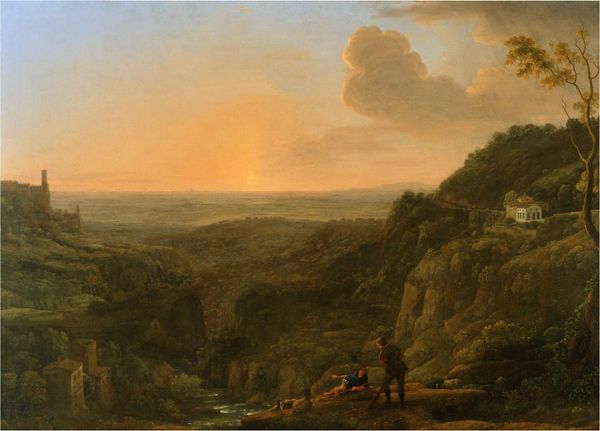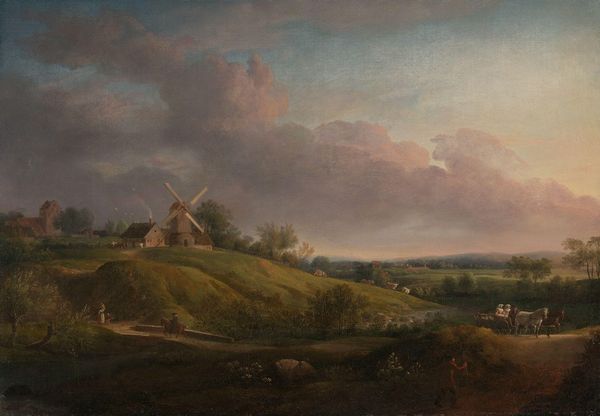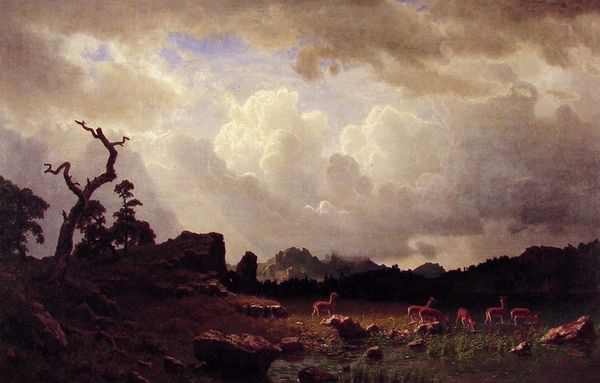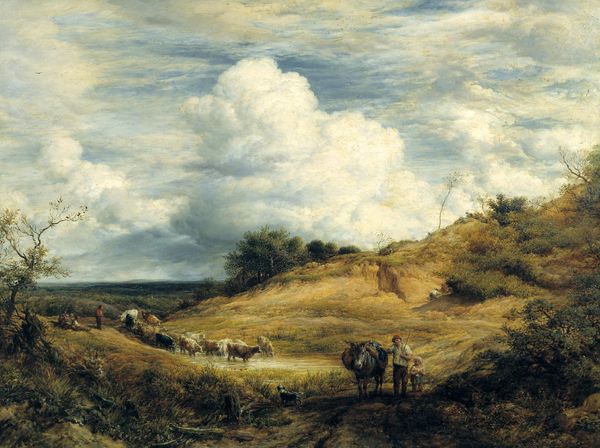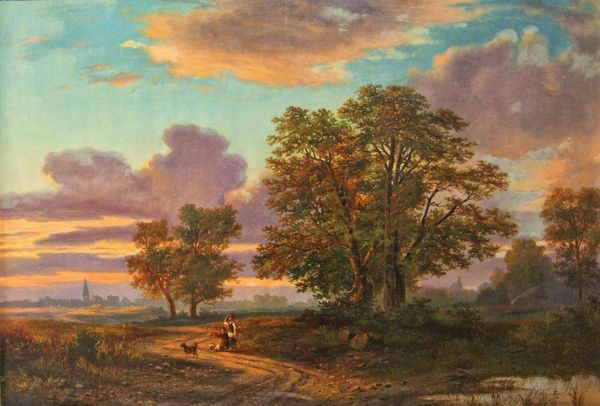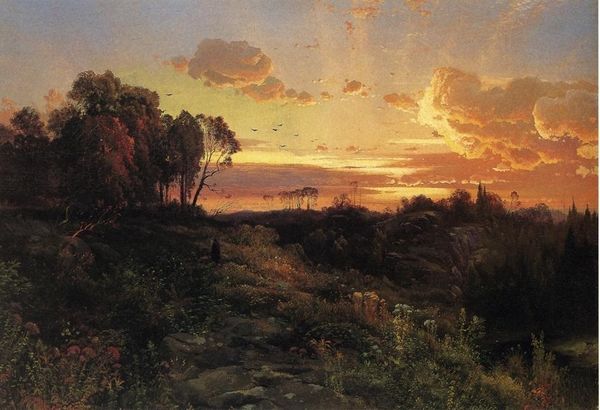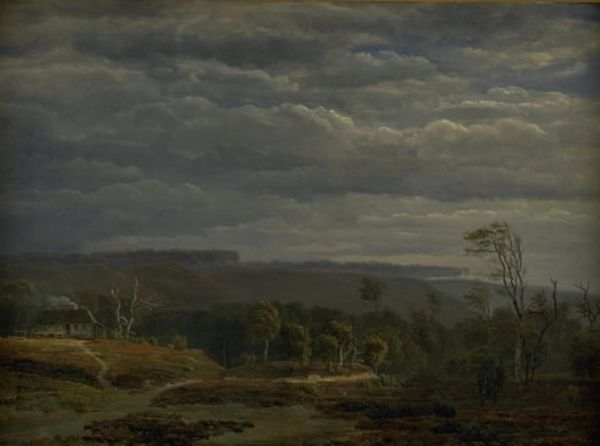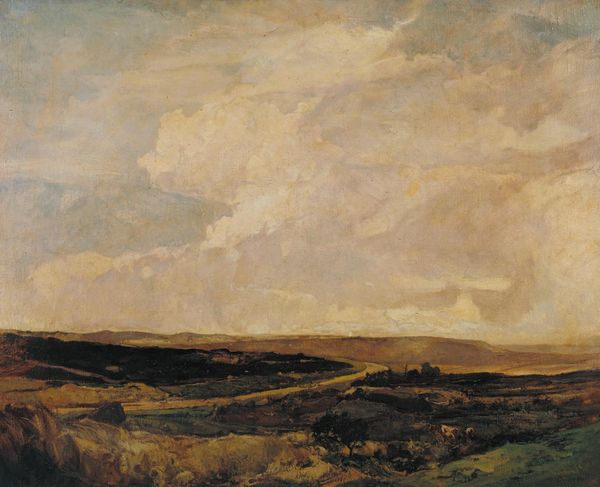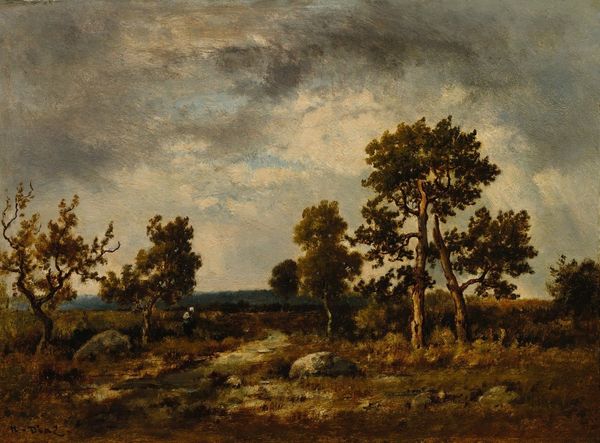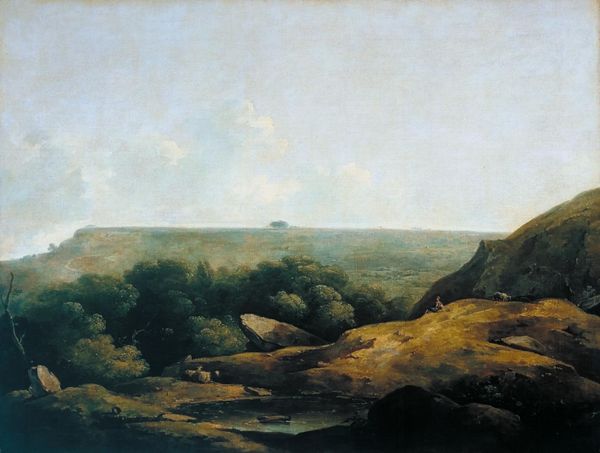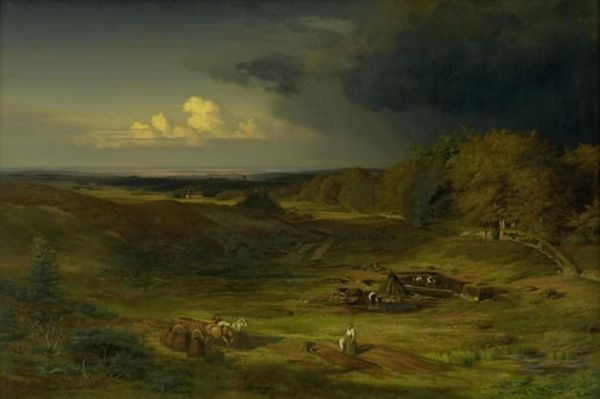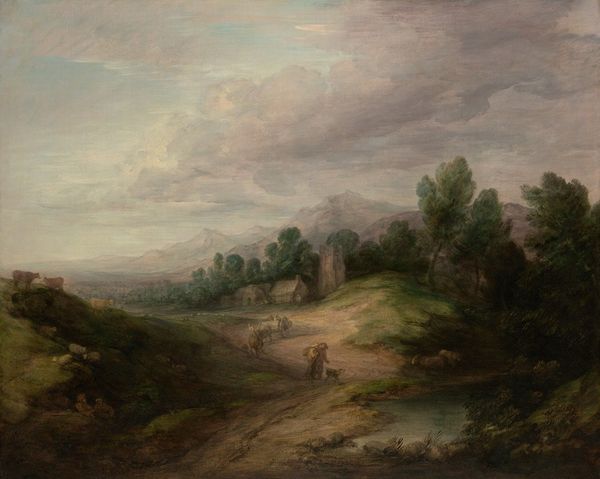
Copyright: Public domain
Editor: So, this is George Inness’ "The Goat Herder," painted in 1853 using oil on, presumably, canvas. I’m immediately drawn to the sky – those golden hues. It's such a Romantic vision. How do you interpret this work, especially concerning its material qualities? Curator: It's fascinating how Inness uses readily available materials like oil paint to construct an idealized vision of rural life. But let’s think about those materials. Where did the pigments come from? Who processed them? And who could afford paintings like this? These questions link the artwork directly to broader systems of labor and consumption. The "plein-air" aspect is also key. How does bringing the studio outdoors change the labour involved? Editor: That's a great point! I hadn't considered the pigment sourcing. So, the simple act of painting outside shifts not just the subject but the *entire* production chain and, who had access to that kind of 'freedom' and what impact this has on the 'natural'? Curator: Exactly! We are moving beyond simply seeing a beautiful landscape, but how its creation intersects with social and economic realities. Inness attempts at realism, yes, but who and what were allowed to be within this realm of realism? What are we not seeing, and who doesn’t get to partake in romanticism? Editor: This definitely challenges my initial romantic reading! Curator: Good! It is essential that we look beyond aesthetic value and engage critically with what went into this picture: The raw materials, the labour, and the consumption surrounding it. Editor: I am now reflecting on the work that created "The Goat Herder" not just what it shows! Curator: Yes! Consider the social impact and conditions behind all "beautiful art"!
Comments
No comments
Be the first to comment and join the conversation on the ultimate creative platform.
